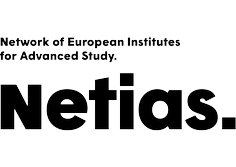Colloquium FRIAS Research Focus Quantum Transport- Stanislav Balouchev, FRIAS (Physical Chemistry): Energy Transport in Dense Populated Organic Triplet Ensembles: Non-coherently Excited Annihilation Upconversion
| Wann |
20.01.2015 von 12:15 bis 13:00 |
|---|---|
| Wo | FRIAS, Albertstr. 19, Großer Seminarraum |
| Name | Anna Blattner |
| Kontakttelefon | 0761 203 97362 |
| Teilnehmer |
universitätsoffen / open to university members |
| Termin übernehmen |
|
The process of triplet-triplet annihilation upconversion (TTA – UC) takes place in multi-chromophore systems consisting of energetically optimized pairs of sensitizer (metallated macrocycles, MM) and emitter molecules (aromatic polycyclic hydrocarbons, PAH). The photon energy is absorbed by the Q-band of a sensitizer and stored in its triplet state, mediated by the process of intersystem crossing (ISC). Further, this energy is transferred to an emitter triplet state via the process of triplet-triplet transfer (TTT). Next, the excited triplet states of two emitter molecules undergo triplet-triplet annihilation (TTA), in which one emitter molecule returns back to its singlet ground state and the other molecule gains the energy of both triplet states and is excited to the higher singlet state. As the singlet state emitter decays radiatively back to the ground state, a fluorescence photon is emitted which is strongly blue-shifted to shorter wavelengths in relation to the excitation photons.
The process of TTA–UC relays of optically created dense populated organic triplet ensembles. Importantly, the excitation lifetimes of the triplet states are relatively large and therefore pronounced interaction of those triplet ensembles with the environment is expected. The dynamic parameters (rising- and decay times, quantum yield) of the TTA – UC process depends on the local mobility of the participating species, which can be related to the rotational diffusion (RF) of the interacting species, governed by the local temperature and solvent properties. The increase of RF leads to substantial increase of the emitter delayed fluorescence intensity (the UC-signal) and simultaneously to decrease of the residual sensitizer phosphorescence. Additionally, excited triplet states could be quenched effectively even at low (residual) oxygen concentrations. Phosphorescence decrease (or phosphorescence life time decrease) as a consequence of the increased temperature or increased oxygen concentration are used in the literature as a T – sensing or O2 – sensing tools. It should be noted explicitly, that T – or O2 – responses are interconnected (competing each other for the same excited triplet states) and are unavoidable bound to an unwanted and non-controlled process – the singlet oxygen generation (SOG), causing severe experimental complications.
TTA –UC process, performed in confined environment could be a solution for experimental problems arising by O2&T – sensing.





